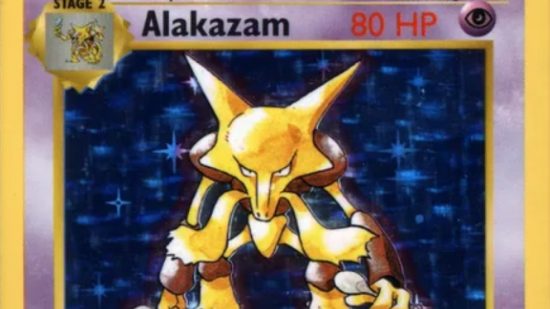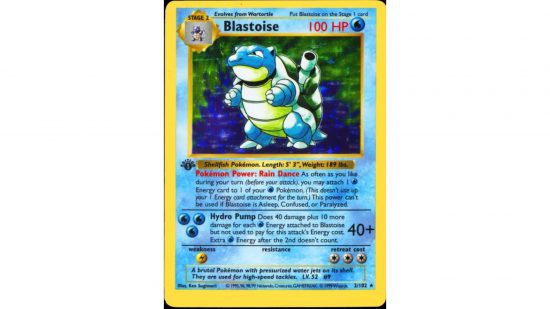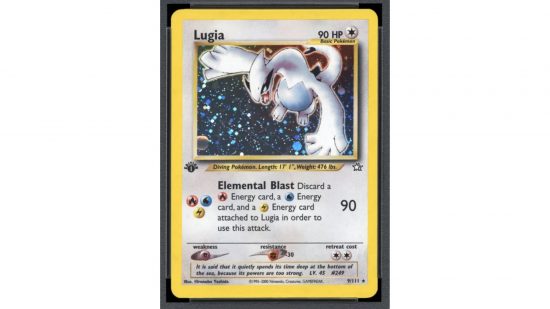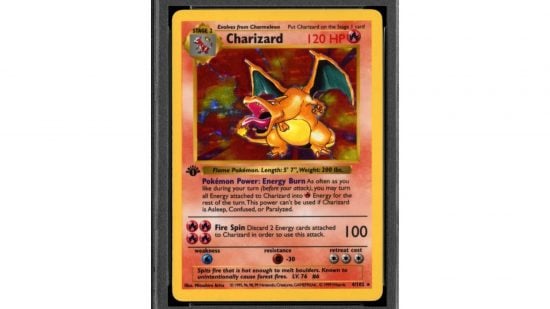If you’re on the hunt for expensive trading cards for your collection, you need to know how to spot first edition Pokémon cards. The first edition Pokémon cards from Base Set were the very first English language Pokémon cards ever printed in the US. Released in January 1999, demand for these cards outstripped supply, and several reprints swiftly followed. But it’s the first edition printings of these Pokémon cards that collectors crave.
Thanks to power creep in the Pokémon TCG, first edition cards are certainly not the most powerful Pokémon cards in the game – in fact, you could argue they’re among the weakest. But with cards this old, that doesn’t matter; these are still the best Pokémon cards to seek out if you want to become a serious collector. That’s because, beyond a handful of trophy and promo cards only printed in very low numbers, good quality first edition Pokémon cards are the rarest, most expensive Pokémon cards you’re ever likely to find.
In this guide, we’ll teach you everything you need to know about first edition Pokémon cards, from how to identify them, to how much they’re worth, and common mistakes and misconceptions to avoid.
Identifying first edition Pokémon cards
A handful of rare Base Set Pokémon cards like Charizard, Blastoise, Chansey, etc are the holy grail for most Pokémon TCG collectors, but there were a number of different Base Set printings. First edition Pokémon cards are the very first version ever released, which makes them much more valuable than later iterations.
Fortunately, it’s super easy to spot first edition Pokémon cards. Just look out for the Edition 1 logo on the card. This appears in the middle of the card on the left for Pokémon cards, on the top right for Energy cards, and in the bottom left for Pokémon Trainer cards.
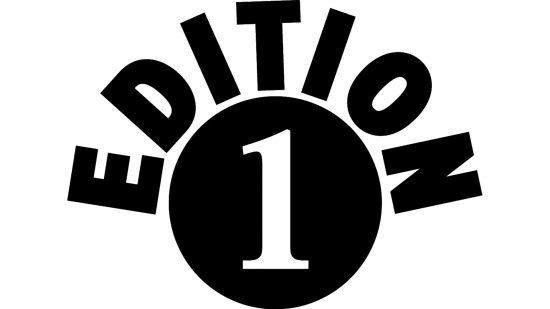 This symbol makes it really straightforward to spot first edition Pokémon cards. If your card doesn’t sport this lusted-for logo, it’s not first edition, simple as that. That means it’s probably Shadowless or Unlimited. But don’t despair just yet, you might still have something good on your hands.
This symbol makes it really straightforward to spot first edition Pokémon cards. If your card doesn’t sport this lusted-for logo, it’s not first edition, simple as that. That means it’s probably Shadowless or Unlimited. But don’t despair just yet, you might still have something good on your hands.
Shadowless is the common name used for second printing Base Set Pokémon cards, which don’t sport the first edition logo. Both first edition Pokémon cards and second printing cards lack the shadow around the border, which appears on later cards, but because they have the logo, the first printing is more usually called first edition. While less valuable than first editions, Shadowless cards are still really rare. Still with us so far?
After that, there’s Unlimited cards: a much larger print run, and a much less exciting find as a result. These can be identified by the shadows round the border, or the copyright line at the bottom ‘©1995, 96, 98’. You can still sell a good quality Unlimited Base Set Charizard Pokémon card for a large sum, but don’t expect less sought after monsters, or damaged copies to be worth much at all.
First edition Pokémon cards from later sets
Complicating matters further, it’s not just the 102 cards from Base Set that feature the first edition logo. In fact, the first ten Pokémon TCG expansions, from Base Set all the way to 2002’s Neo Destiny, also had first edition print runs which feature the same exact logo.
You can easily distinguish Base Set first edition Pokémon cards from other sets, however, because these sets will also feature their individual set’s symbol to the right hand side of the card.
Are first edition Pokémon cards from later sets still valuable? Generally, they’re not as sought after as Base Set, but the rarest first edition cards from these sets will still be extremely expensive, especially in good condition. For instance, a flawless copy of Lugia from Neo Genesis sold for $145,000 in 2021, while Shining Charizard from Neo Destiny has gone for $20,000. Not bad!
How much are first edition Pokémon cards worth?
First edition Pokémon cards are some of the more expensive pieces you can collect, with the rarest cards in particular going for an outrageous sum. Everyone knows first edition Charizard is the real steal, with the most expensive copy ever sold going for a ridiculous $420,000, but did you know that PSA 10 copies of other rare cards from the set, like Ninetales, Alakazam, Blastoise, and Venusar can sell for tens of thousands of dollars?
Pokémon card prices can fluctuate wildly, so it’s impossible to put a concrete figure on the cost of any one card. But sales figures on the website Price Charting suggest that, if the card is in good nick, even the most common first edition Pokémon cards, a Weedle or Caterpie, can go for a couple of hundred dollars. But there’s a big difference between PSA 10 and PSA 9 – anything less than perfect, and your first edition Pokémon cards’ value can tank dramatically. So… be careful!
As we mentioned previously, things gets dramatically less expensive when you look at first edition Pokémon cards outside of Base Set, but there are notable exceptions to the rule, particularly at higher Pokémon card rarities.
For more trading card game content, check out the best Pokémon decks right now. And before you make any big Pokémon purchases, make sure you consider the veracity of the seller: here’s how to spot fake Pokémon cards.
